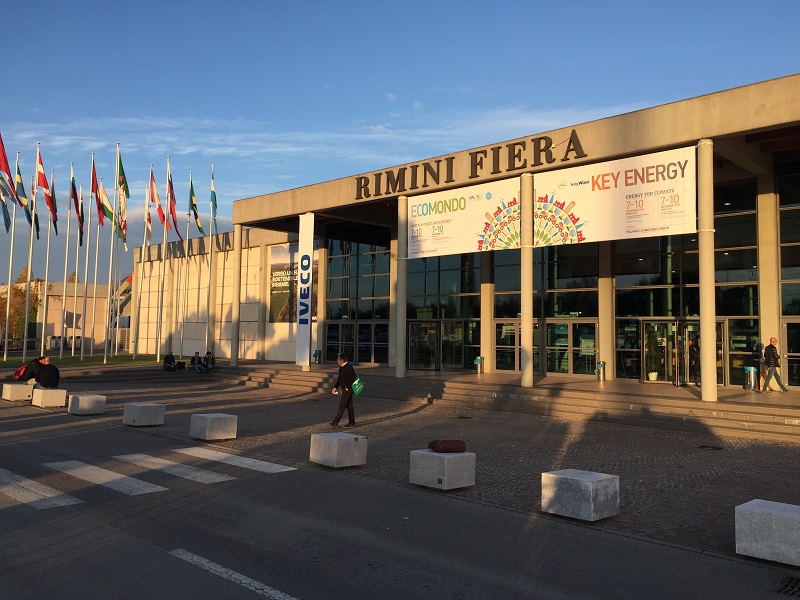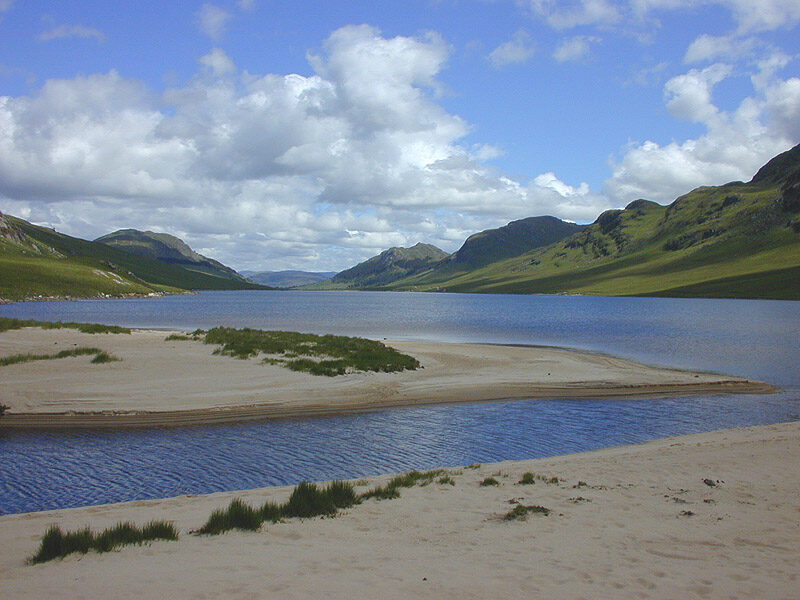Italy's leading solar event took place last week in Rimini, northern Italy, as part of Key Energy, the fair dedicated to both conventional and renewable energies within the circular economy platform, Ecomondo. According to organizer the Italian Exhibition Group, an increasing number of visitors was recorded this year.
“In the end, both the total attendance of exhibitors (+ 4%) and that of the foreign players, which reached 10%, was also up compared to the 2017 edition,” a spokesperson told pv magazine.
The fair was joined by exhibitors from 115 countries, 70% of which hailed from Europe, while 9% came from Mediterranean regions and “notable participation from China and the Russian Federation,” said Alessandra Astolfi, group brand manager of Italian Exhibition Group.
More specific figures from the event were not available at the time of publication. However, the solar event was filled with a considerable number of high-level conferences, visitors and exhibitors, despite the fact the Italian solar market has not grown as expected this year.
The absence of big Chinese solar module manufacturers, of which a few were present at the 2017 event, underlines that bold expectactions of further PV growth in Italy must be combined with a sprinkling caution. Indeed, there are a large number of challenges, which the solar sector is actively seeking to address.
The case of the missing growth
At the 2017 edition of Key Energy, almost all of the Italian solar sector representatives agreed that in 2018, PV growth would finally exceed the usual 350 MW/400 MW annual threshold, which for over four years has characterized the country’s solar energy landscape. There were even predictions that between 700 MW and 800 MW may be deployed.
However, as recent statistics show, growth for this year may be slightly lower than that of 2017, in which newly installed capacity was around 400 MW.
This missing growth can largely be attributed to the large-scale solar segment, which has provided just three projects totaling 17 MW this year. This is despite a large number of announcements for grid-parity projects made by several international and Italian players in 2017, when Italy and Spain were hailed as the first European markets to offer viable conditions for the private power purchase agreement (PPA) segment.
While Spain has moved forward, thanks to a huge pipeline of developed and shovel-ready large-scale solar projects – the first PPAs have been signed and the projects are being built and/or completed – in Italy, several issues are complicating development. They include low availability and high costs of land, complex approval processes and, in some cases open hostility from local administrations, which do not want to become unpopular by approving solar facilities on agricultural fields.
Concrete actions needed
According to Key Energy’s scientific director and local renewable energy expert Gianni Silvestrini, the recent change in government and delay in defining new policies to revive the Italian solar sector are responsible for the current stalemate.
“However, there is a great ferment, particularly in the photovoltaic sector,” he told pv magazine, adding, “With regard to large plants, permitting activities are already underway for many hundreds of MWs.”
According to Silvestrini, the regulatory framework for large-scale solar initiatives is relatively uneven among Italian regions at the moment.
“In my opinion, therefore, a new pact between the government and the regions is needed to establish a virtuous path that allows us to guarantee the maximum possible consensus, while priority should be given to quarries and abandoned industrial sites, landfills of waste at the end of life, water basins … we could also favor plants that can also guarantee agricultural production, on the same or on contiguous land appropriately irrigated, or that are equipped with storage systems,” he said.
Although Silvestrini recognizes that the current government is in favor of accelerated renewable energy development, as it demonstrated when it pushed for more EU targets, he says it needs to implement more concrete actions.
“In my opinion,” he said, “the government has lost the opportunity to issue with greater speed and with more incisive proposals the decree on support for renewables that had been awaited for more than two years and which will not be published before January 2019.”
Furthermore, he believes more could be done for the private PPA segment by aggregating demand from local industrial districts. As for self-consumption, the rules should be improved by creating the conditions for the development of energy communities.
“On the authorization side, as I said, the government should define, together with the regions, clear rules that reduce timeframe and encourage the involvement of local realities, a decisive step to reach the 2030 targets. The real challenge for this government will no longer be based on the definition of new incentives, but on the adaptation of the regulations and on the clarity of the authorization processes,” Silvestrini concluded.
Alberto Pinori, president of Anie Rinnovabili, the renewable energy association of the General Confederation of the Italian Industry (Confindustria), has also stressed that the large-scale segment is currently facing a series of issues, including long timeframes for securing approvals.
“We do not expect utility-scale plants similar in size to those of other countries, let’s say over 50 MW in size,” he said in a statement to pv magazine. “These types of plants will probably be the exception and not the rule.” According to him, obtaining approval for a solar park may currently require more than a year in Italy.
Scalability
Alberto Pinori further revealed that although the private PPA segment is seeing some development, contracts are currently being signed between developers and off-takers (and not final clients), and for periods of not more than five years.
The scalability of the PPA model within industrial sectors could boost further growth, however. “If, for example, most of the European steel makers would buy electricity using the same model for long-term PPAs, it would probably not be a problem to more contracts of this kind,” he explained.
More stable regulation of the electricity market could also help the PPA segment, according to Pinori, although Italy is in a transition phase, in which the rules of the electricity market are awaiting a future consolidated structure.
Stalemate
President of the Italia Solare association, Paolo Rocco Viscontini went on to highlight the current stalemate in Italy's solar sector. “We are providing numbers that are lower that those of Swizerland and the Netherlands,” he told pv magazine, adding, “Although there are currently GWs of large-scale projects under development across all Italian regions, especially in the southern part of the country, there are several regional governments that are opposing projects of very large size in particular.”
Rocco Viscontini believes that more consistent rules for the approval of big PV projects should be written to ensure that “solar parks are done and are done in a proper way.” Another important step, he said, is reducing constraints to the deployment of such projects on agricultural land.
“We are aware that Italy is not Chile or Spain in terms of surfaces, and that projects of 150 MW may be here undoable, but if we want to add between 50 GW and 55 GW in order to reach our 2030 targets, rooftop surfaces and former landfills or other surfaces to be reclaimed will not be enough, we need agricultural surfaces,” he said.
Distributed generation and energy communities
While the first substantial capacity from large-scale solar is expected to come online next year, the Italian solar sector keeps growing its residential and commercial segments, which have provided most of this year’s newly installed capacity.
Although one of several indirect incentives supporting distributed solar generation in Italy, the so-called super-amortization on investment goods, is unlikely to be renewed next year, PV projects up to 1 MW in size seem set to be the spine of the Italian renewable energy sector until new growth comes from auctions and the PPA segment. The sector also provides the majority of jobs and revenue.
A further self-consumption boost may also come from energy communities, following the introduction of related provisions in the EU's Clean Energy Package. In a conference organized by ANIE Rinnovabili and moderated by pv magazine, the potential of this kind of self-consumption model has emerged with clarity. But also on this side, much more will have to be done to provide a clear and less complicated framework.
This content is protected by copyright and may not be reused. If you want to cooperate with us and would like to reuse some of our content, please contact: editors@pv-magazine.com.




By submitting this form you agree to pv magazine using your data for the purposes of publishing your comment.
Your personal data will only be disclosed or otherwise transmitted to third parties for the purposes of spam filtering or if this is necessary for technical maintenance of the website. Any other transfer to third parties will not take place unless this is justified on the basis of applicable data protection regulations or if pv magazine is legally obliged to do so.
You may revoke this consent at any time with effect for the future, in which case your personal data will be deleted immediately. Otherwise, your data will be deleted if pv magazine has processed your request or the purpose of data storage is fulfilled.
Further information on data privacy can be found in our Data Protection Policy.